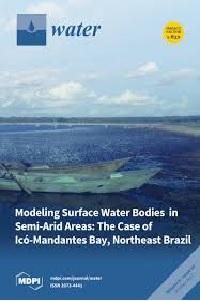Abstract
Flash floods are increasingly frequent worldwide. Recent flooding in eastern Ethiopia resulted in casualties, destruction of property and interruptions of service. National flash flood forecasts made today primarily consider precipitation, putting less emphasis on surface processes. Enhancing accurate flash flood forecasts by accounting for surface processes and hydrological models together with a deeper understanding of heavy precipitation mechanisms is of paramount importance. To this end, an uncoupled WRF-Hydro model was calibrated for eastern Ethiopia to simulate extreme floods. Sensitivity analysis for August 2006 showed that infiltration runoff, hydraulic soil conductivity and saturated volumetric soil moisture with parameter values of 0.1, 1.5 and 1.0 produced realistic streamflow distribution. Extreme floods in March 2005 and April 2007 were further studied. The
results showed that WRF-Hydro replicates temporal and spatial patterns well. Analysis using observational/reanalysis data revealed associated physical processes. Precipitation during these events exceeded long-term climatology and spanned wider areas in eastern Ethiopia. These heavy precipitation events are associated with strong upper-level westerly jet streams and rainfall-conducive circulation anomalies at lower levels. Positive outcomes from WRF-Hydro suggest operational implementation for flood monitoring and early warning systems in forecasting centers.

